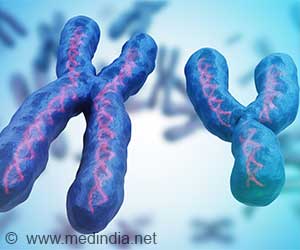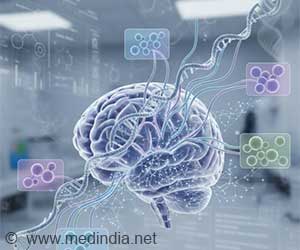The loss of function of two genes, that affect the Bax/Bak signaling pathway, were associated with motor development in children
- A research team from Cincinnati Children's Hospital Medical Center and City University of New York School of Medicine identified a probable cause of motor development disability
- The loss of function of 2 genes were found to affect the Bax/Bak signaling pathway
- This results in the motor development disability among children, even though their intellectual ability might be average or above average
Newly Identified Genetic Pathway for Motor Development Disabilities
As a part of the study, the research team bred mice that lacked the molecular signaling of the Bax/Bak pathway. The study findings showed that- The Bax/Bak pathway’s downstream molecular targets were essential for the development of sophisticated connections that existed between the spinal circuits and motor cortex.
- Mutations identified in the Bax/Bak pathways can be used as markers of developmental motor disabilities in humans.
- These disruptions in the Bax/Bak pathways are present among people with skilled motor disabilities.
- The Bax/Bak pathway is involved in the regulation of re-organization of other aspects of the central nervous system of mammals.
Development of Motor Skills
Previous studies have found that only basic unskilled motor tasks may be carried out by young postnatal mammals, which includes human babies. This is because infantile neural circuitry is activated antagonistically, with muscles opposed to each other being activated at the same time.- The neural circuits between the spinal cord and the brain, re-organize as mammals and humans begin to grow above infancy
- The neural connections begin to get more sophisticated
- Antagonistic pairs of muscles are activated reciprocally
Developmental Motor Disabilities
Children who suffer from developmental motor disabilities have limited skilled motor abilities. A large proportion of these people have an immature method of co-activating muscle pairs into adulthood. This affects their dexterity.Dyspraxia
During the process of a child’s development, there could be an impairment or immaturity that occurs in the organization of movement. There is an immaturity during the processing of information in the brain. A child diagnosed with dyspraxia is found to have problems with the way language is perceived.- Dyspraxia is an inherited condition, in many instances, and it runs in the family.
- Males are more likely to be affected than females.
- This condition is also known as perceptuo motor dysfunction, clumsy child syndrome and motor learning difficulties.
- Some of the characteristic features of this condition include an appearance of being out of sync, vision problems, writing, posture problem, difficulty with speaking, reading and writing and poor memory. The intelligence of people with this disorder is above average or average but their limb movements are immature.
Identifying Brain Connections in Developing Mice
The genetic pathways that are involved in the circuitry between corticospinal neurons in the motor cortex and muscles of the mice brain were identified using trans-synaptic viral and electrophysiological assays. This was used to identify connections that developed in maturing mice.TOP INSIGHT
Gene mutations linked to the Bax/Bak pathway, a pathway that affects neural circuits between the spinal cord and the motor cortex, can lead to motor development disability in children.
- The importance of Bax/Bak signaling in the circuity of the brain of mice that matured.
- That the development of circuits was also triggered by the Bax/Bak signaling.
- That the opposing muscle groups were found to be activated reciprocally.
- That the circuitry that developed in the absence of Bax/Bak signaling restricted reciprocal activation of these muscles.
Tests to Assess Motor Skills
The mice that were deficient in the Bax/Bak pathway were subjected to skilled motor tests and it was found that the animals had- Unusual co-activation of opposing flexor muscle pairs and extensor
- Normal reaching as well as retrieval behaviors when they were given food
- Insufficiency in grasping skills
- Difficulty with tests associated with walking on a metal grid and a balance bar, when measured by foot slips
Disability Among Indians
It is important for optimum development of children during their early years to ensure healthy transition to adulthood. Nearly 200 million children across the world do not reach their developmental potential during the first five years of their life due to poor health, nutrition, lack of awareness or due to disorders.According to the World Health Organization
- Globally, 15-20% of children have disabilities
- 85% of children with disabilities live in developing countries
- According to data from the Census of India (2011)
- 7,862,921 children live with disability in India
- 1,045,656 are affected with movement disorder
References:
- What is Dyspraxia? - (http://www.dyslexiaindia.org.in/Dyspraxia.html)
Source-Medindia
 MEDINDIA
MEDINDIA





 Email
Email






